Edward Teach, AKA Blackbeard
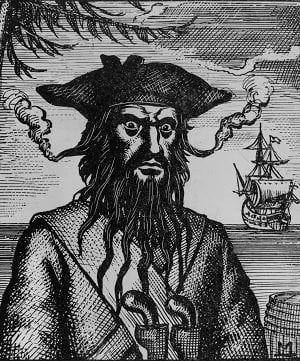 History is rarely as clear-cut as it appears on the surface. Everybody knows that the druids were the educated priestly classes of the Celts, for example, but our sole source for that knowledge is the writings of non-Celts looking in from the outside. Everything is inference – bits and pieces of knowledge, and stretching between them an entire framework of extrapolation and best guesses. Naturally, this results in the few pieces we do know for certain assuming a more important quality than they otherwise merit. Blackbeard is a classic example of this. Though he looms large in the general consciousness as the most famous of pirates, in truth he was active as a pirate for barely two years – and of his life before then we know almost nothing. Yet in those two years he did enough to become a legend.
History is rarely as clear-cut as it appears on the surface. Everybody knows that the druids were the educated priestly classes of the Celts, for example, but our sole source for that knowledge is the writings of non-Celts looking in from the outside. Everything is inference – bits and pieces of knowledge, and stretching between them an entire framework of extrapolation and best guesses. Naturally, this results in the few pieces we do know for certain assuming a more important quality than they otherwise merit. Blackbeard is a classic example of this. Though he looms large in the general consciousness as the most famous of pirates, in truth he was active as a pirate for barely two years – and of his life before then we know almost nothing. Yet in those two years he did enough to become a legend.
The main source of information on Blackbeard’s early life is a somewhat dubious one – “A General History of the Robberies and Murders of the most notorious Pyrates” by one Captain Charles Johnson. Johnson is a mysterious figure, as the name is almost certainly false. Some point to the nautical knowledge on display in the book, and the corroborating evidence for some of his claims, and say that he must have been an ex-pirate who had taken the royal pardon. Others claim that the book is little more than a cobbled-together collection of reports and stories, tied together in a false narrative, and written by either Daniel Defoe or the publisher Nathaniel Mist (who was an ex-sailor). The later expanded version of the book definitely has some of that to it, but the original version, published in 1724 (less than a decade after the events of Blackbeard’s career) seems to have had a bit more substance to it. Still, while it has to be taken with a pinch of salt, it’s better than nothing.
Even with that, we still know little about Blackbeard. His original name was almost certainly not Edward Teach, but that was what he chose to pirate under. Well, sort of – spelling at the time was not an exact science, so Edward Thatch also appears in the records. He was born around 1680, allegedly in Bristol, and was almost certainly a privateer in Queen Anne’s War, when that somewhat obscure British monarch took advantage of the Spanish wars of succession waging to seize almost all of the Spanish territories in North America. Following the war he, like many others, drifted the short distance from privateer to pirate. He apparently distinguished himself but won no promotion or recognition, and this may explain his later antagonism towards British ships. His ability was unquestionable, at any rate, as was his experience, and it was this that first brings him into the official record in 1716 when Captain Ben Hornigold, who had been raiding shipping for the last three years, made him his second in command.
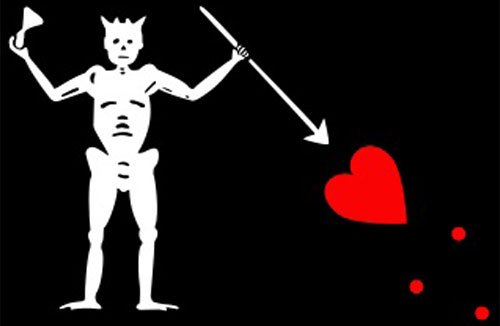
Sometime that year Hornigold captured a ship intact, and gave Teach command of his new vessel. The two ships sailed under Hornigold’s command for a while, but his loyalty to his former British employers soon began to chafe with the men under him. After one too many fat merchant ships were passed over due to flying the Union Jack, the men called a vote. By a majority, they choose to attack any ship they saw, regardless of flag. As Hornigold had opposed the motion, he was forced to retire from command, leaving Teach in charge of the fleet. At the time they controlled four vessels, but Hornigold took two with him when he left (though the bulk of the crew stayed with Teach). Hornigold would later accept the royal pardon and become a pirate hunter, pursuing the very men he had previously sailed with.
The captain of Teach’s other ship was a man named Stede Bonnet, who was possibly the oddest pirate in history. He was a well-educated man who had inherited an estate in Barbados, where he had raised a family. However his constant arguments with his wife led him to decide to run away and become a pirate, despite a complete lack of any nautical experience. He contracted a local shipyard to build him a sloop armed with six guns, which he told them was to be a pirate hunter. Once it was complete he christened it the Revenge, hired a crew, and began pirating. At first he did surprisingly well, ranging from Virginia up to New York and plundering eight ships. However while sailing for the pirate port of Nassau the Revenge was attacked by a Spanish man of war, and took a severe mauling. Half the crew were killed, and Bonnet himself was wounded. The ship limped into Nassau, where Bonnet doubled the number of guns on board and hired fresh crew. While there he met Hornigold and Teach, and agreed to sail with them. As he was disabled by his wounds, Teach acted as captain on Revenge, while Bonnet was his apprentice. Teach continued to command the Revenge until shortly after Hornigold’s departure, when they captured a French slave-ship named Concorde. The ship was far superior to the two ships Teach commanded, so he took it for himself and renamed it Queen Anne’s Revenge.
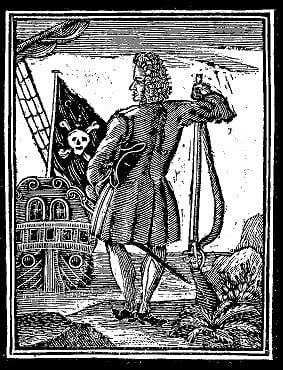
It was around this time that the best-documented encounter with Teach occurred, when he captured the merchant ship Margaret. He held the captain, Henry Bostock, prisoner for a while and questioned him thoroughly about the movements of local shipping. Eventually he let Bostock go, and when he returned to port he swore out an affidavit describing the whole affair. Teach had not given him his name, and so when Bostock described him as a tall man with a long black beard, the description became the source of his nickname. Later writers, like Johnson, would describe Teach as braiding his beard into pigtails, and of threading lengths of slow-burning fuse into both his beard and hair (though most sources have him attaching the fuses to his hat). This deliberate cultivation of a terrifying image was part of a general attempt to create a fearsome reputation for himself, and this was so successful that ships were soon surrendering without a fight rather than face the fearsome Blackbeard.
Bonnet had split off from Blackbeard to try pirating on his own once again, but his lack of success and clear lack of expertise left his crew mutinous, and when he met Teach again they broke ranks and demanded Blackbeard replace him. Blackbeard obliged, putting one of his lieutenants named Richards in charge of the Revenge. Bonnet became a guest aboard the Queen Anne’s Revenge, with his ship stolen out from under him. Blackbeard then resumed raiding the Spanish merchant vessels along the coast with great success, expanding his fleet to eight ships – a powerful force. Powerful enough, in fact, that he began to plan for more ambitious ventures than simply raiding shipping lanes. In May 1718 he set sail for Charleston.
Blackbeard’s blockade of Charleston in South Carolina would go down in history as his most infamous exploit. The port had no resident navy vessel to act as guard, and so his fleet was unopposed as they sat offshore and simply captured every vessel that left or tried to enter the port. Of these, the most notable was the Crowley. It carried a group of rich locals, including a council member named Samuel Wragg, heading across to visit London. With these men as leverage, Blackbeard was able to demand supplies from the town – principally medical supplies, as his crew were suffering from illnesses. At first, it looked like his demands were being dodged, with the governor offering excuses, and eventually he took his entire fleet into the harbour. This panicked the locals, who doubtless feared the pirates were going to invade, but the messenger from the hostages that Blackbeard had sent reappeared and explained the situation. The men that had been sent to escort him had, on arriving at the town, disappeared completely. It later turned out they had immediately gone on a major drunken bender. As a result, though the supplies he demanded had been gathered, they had not been able to send them out. Blackbeard was mollified and let his prisoners go.
While in Charleston, Blackbeard learnt that Woodes Rogers, a British privateer famous for having circumnavigated the globe [1] seven years earlier, had been appointed governor of the Bahamas and sent out to pardon those pirates who would swear off the life, [2] and hang those who would not. Technically Blackbeard was not eligible for the pardon, as he had committed crimes after the cut-off date, but he felt that Charles Eden, governor of North Carolina, would overlook that. Just to be safe though, he sent Bonnet off to ask for a pardon first, in case Eden hung him instead. While Bonnet was gone Blackbeard managed to run the Queen Anne’s Revenge aground, possibly as a means to get rid of some crew before he divided the spoils. When he heard that Bonnet had received his pardon, he immediately arranged to ensure that most of the men were on the Revenge, while he and most of the loot were on the Adventure, the only other ship remaining in his fleet. Then he simply sailed off, stopping en route to maroon twenty five crew members who had objected to the plan. Bonnet returned to find Blackbeard, and the loot, long gone. [2]
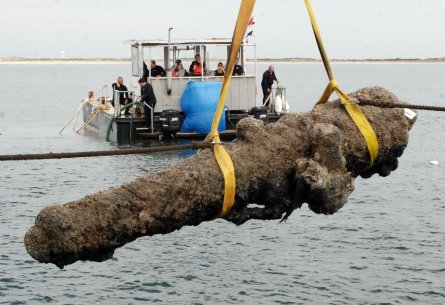
Blackbeard received his pardon from governor Eden and settled down in the small town of Bath, on the coast. Johnson’s account says that he married the daughter of a local plantation owner, though no record of that remains. With Eden’s permission he became a privateer, though some accounts have it that the two men colluded to actually prey on local ships. Blackbeard definitely returned to piracy pretty quickly, and the governor of Pennsylvania issued a warrant for his arrest. Blackbeard simply moved further down the coast, capturing a French ship and then taking it back to port and claiming he had found it deserted. The court ruled in his favour, and the cargo was given to Blackbeard – minus Eden’s cut.
The final phase of Blackbeard’s career began with an impromptu party he held in his favourite mooring at Oracroke Island when another pirate named Charles Vane came to visit. Vane was one of those who had refused the pardon, and he hoped to lure Blackbeard back into full-time pirating. Blackbeard was not that keen, but the two men’s crew nonetheless took the opportunity for a week-long party on the beach. As word spread, the governors of nearby Virginia and Pennsylvania both began to worry about the prospect of renewed attacks on their shipping. Pennsylvania sent two ships to capture the men, but failed to do so. The governor of Virginia, Alexander Spotswood, decided to get a little more intelligence before taking action. He was also hoping to discredit Eden, who he thought was corrupt. Blackbeard’s former quartermaster, a man named William Howard was in the area, and Spotswood had him arrested on trumped-up charges. He brought him to trial, and though the case against him was full of holes, Spotswood nonetheless managed to have Howard condemned to death, though he was forced to free him before the sentence could be carried out. He did force Howard to give him Blackbeard’s whereabouts, however.
There is some suggestion that Spotswood thought Blackbeard had hidden treasure away, as he gave orders that the pirate be captured rather than killed. He sent troops to approach Bath from the land, while two ships, led by a Captain Maynard, approached from the sea. En route, however, Maynard discovered that Blackbeard was once again in his favourite harbour at Oracroke. He managed to prevent word of his approach from reaching Blackbeard, and caught him undercrewed and off guard. Nonetheless he was able to damage the ships severely with cannon fire, before he ran aground on a sandbar, possibly due to fire from Maynard’s ships damaging his sails. With the Adventure grounded, Maynard moved in and boarded. The majority of his crew had been kept below decks, and so the pirates were unprepared for the size if his assault. Blackbeard and Maynard fought, and Maynard’s sword was broken before other sailors managed to join in and cut Blackbeard down. After the fight, Maynard examined the pirate captain’s body and found that he had been shot five times and suffered around twenty sword wounds before eventually being defeated. His head was cut off and his body thrown into the bay, where legend has it that it swam around the ship twice before sinking.
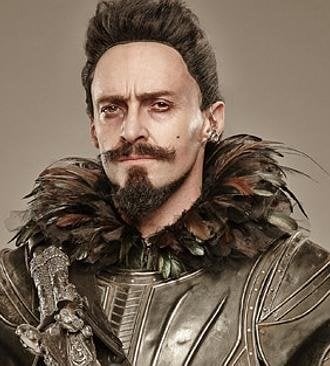
Despite his short career, Blackbeard was legendary during his lifetime, and later stories only enhanced that reputation. Within ten years, piracy in the West Indies came to an end. Johnson’s book, published near the end of that period, became the catalyst that turned the pirates into cultural icons, and Blackbeard himself became, for many, the canonical pirate. The aura of supernatural horror he deliberately fostered only added to the effect, with stories circulating of him still sailing the seas as a ghost, looking for his head. What actually happened to the head itself is a mystery, with some stories having it that it was made into a silver goblet and held by various local worthies. Even in modern versions of his story, this supernatural element makes its presence felt. Notably, the Tim Powers novel On Stranger Tides features Blackbeard as a powerful magician who engineers his own beheading as part of a ritual to grant himself immortality. The fourth Pirates of the Caribbean film (which takes its title and inspiration from the Powers book, though little else) also has Blackbeard in possession of mystical powers, and the forthcoming movie Pan also ties him into a magical universe. In life, he used fear to help him defeat his enemies – perhaps it is fitting that, nearly three hundred years later, it is as that larger than life character that he is remembered.
[1] A trip where he rescued a marooned sailor named Alexander Selkirk. Selkirk would later write a book based on his experience. The book was Robinson Crusoe, and Selkirk wrote it under his far more famous pseudonym – Daniel Defoe.
[2] Pardons for pirates were relatively common when the government believed a war was about to break out, as they then planned to recruit them as either privateers or as members of the navy.
[3] Bonnet took back over command of Revenge and sailed after Blackbeard looking for vengeance, though he never managed to catch him. He broke his pardon and went back to pirating, and was captured a few months later. His mind apparently broke under the strain, and though there was some talk of clemency for his obvious mental problems, he was hanged on the 10th December.
